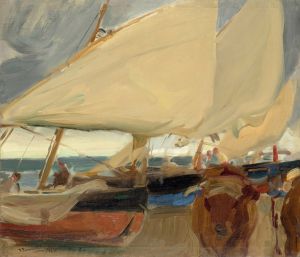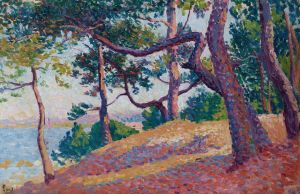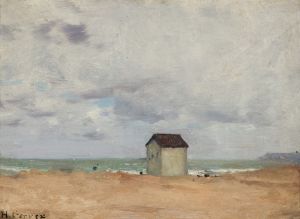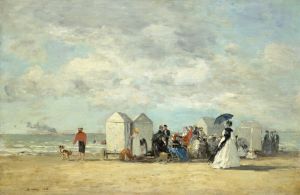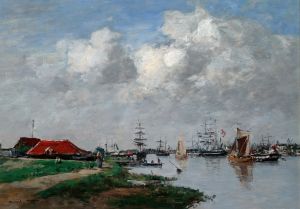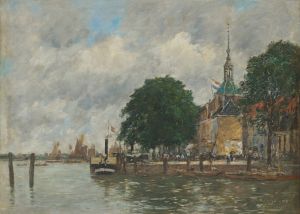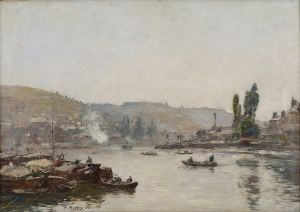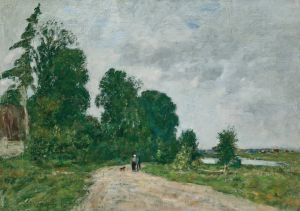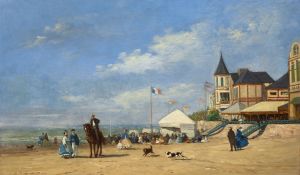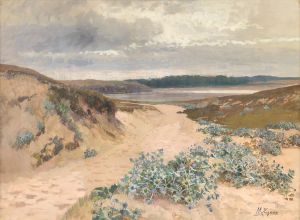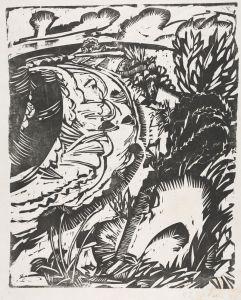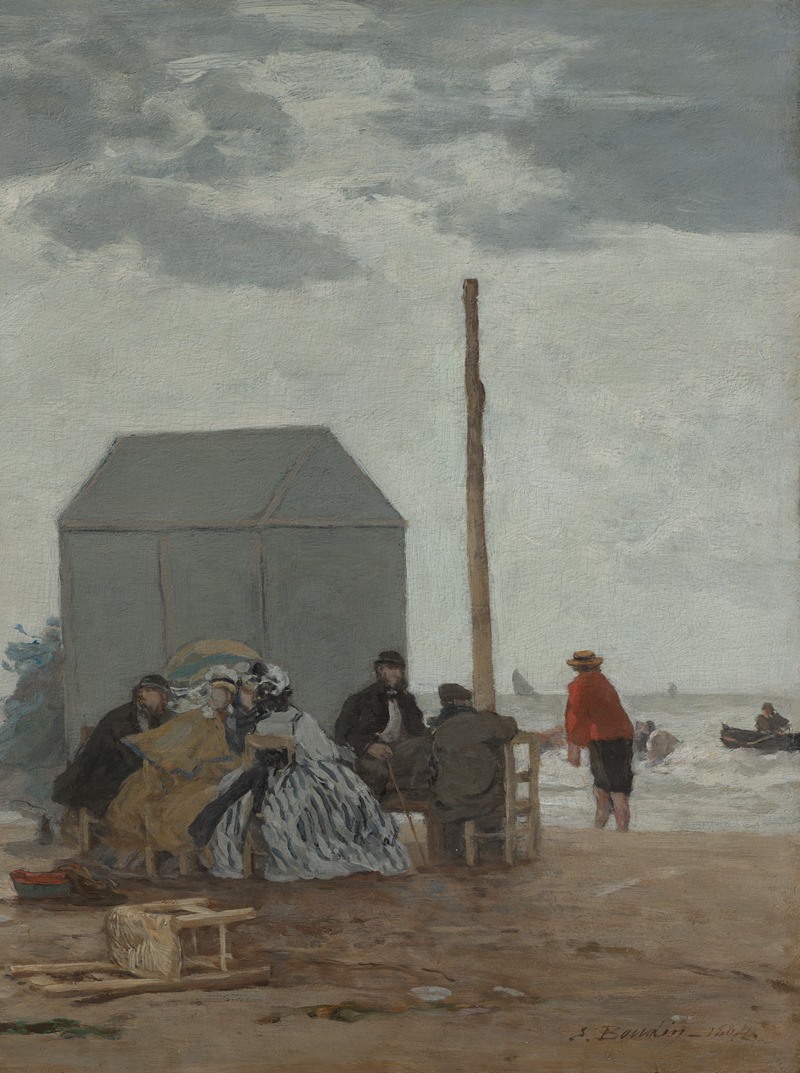
The Beach at Deauville
A hand-painted replica of Eugène Boudin’s masterpiece The Beach at Deauville, meticulously crafted by professional artists to capture the true essence of the original. Each piece is created with museum-quality canvas and rare mineral pigments, carefully painted by experienced artists with delicate brushstrokes and rich, layered colors to perfectly recreate the texture of the original artwork. Unlike machine-printed reproductions, this hand-painted version brings the painting to life, infused with the artist’s emotions and skill in every stroke. Whether for personal collection or home decoration, it instantly elevates the artistic atmosphere of any space.
"The Beach at Deauville" is a painting by the French artist Eugène Boudin, created in 1865. Boudin is often recognized as one of the earliest French landscape painters to paint outdoors, or en plein air, which significantly influenced the Impressionist movement. His works are noted for their vibrant depiction of light and atmosphere, particularly in coastal scenes.
Eugène Boudin was born on July 12, 1824, in Honfleur, France, and he developed a profound connection with the sea and the skies of the Normandy coast, which became a recurring theme in his artwork. "The Beach at Deauville" exemplifies his fascination with the seaside and his skill in capturing the transient effects of light and weather.
Deauville, located in the Normandy region of France, was a fashionable seaside resort during the 19th century, attracting many tourists and artists. Boudin's painting captures a typical day at the beach, with elegantly dressed figures enjoying the leisure activities that the resort offered. The composition of the painting includes a broad expanse of sandy beach, dotted with vacationers and parasols, set against the backdrop of the calm sea and a sky filled with dynamic clouds.
Boudin's technique in "The Beach at Deauville" showcases his mastery of light and color. He uses a delicate palette to render the subtle variations in the sky and water, creating a sense of depth and atmosphere. The figures on the beach are depicted with loose, fluid brushstrokes, which convey movement and the casual elegance of the scene. This approach to painting figures in a landscape was innovative at the time and would later be embraced by the Impressionists.
The painting reflects Boudin's keen observation skills and his ability to capture the essence of a moment. His work often focused on the interplay between the natural environment and human activity, highlighting the beauty of everyday life. "The Beach at Deauville" is a testament to his talent in portraying the ephemeral qualities of light and weather, which he believed were central to the experience of a landscape.
Boudin's influence on the Impressionist movement is significant. He was a mentor to Claude Monet, who later became one of the leading figures of Impressionism. Monet himself acknowledged Boudin's impact on his work, particularly in terms of painting en plein air and focusing on the effects of light.
Today, "The Beach at Deauville" is celebrated as an important work in Boudin's oeuvre and a fine example of 19th-century French landscape painting. It is held in high regard for its technical skill and its ability to evoke the leisurely charm of the Normandy coast. The painting is part of the collection at the Musée d'Orsay in Paris, where it continues to be admired by art enthusiasts and scholars alike.
Eugène Boudin's legacy as a pioneer of outdoor painting and his contributions to the development of Impressionism remain influential. "The Beach at Deauville" stands as a beautiful representation of his artistic vision and his dedication to capturing the fleeting moments of natural beauty.





